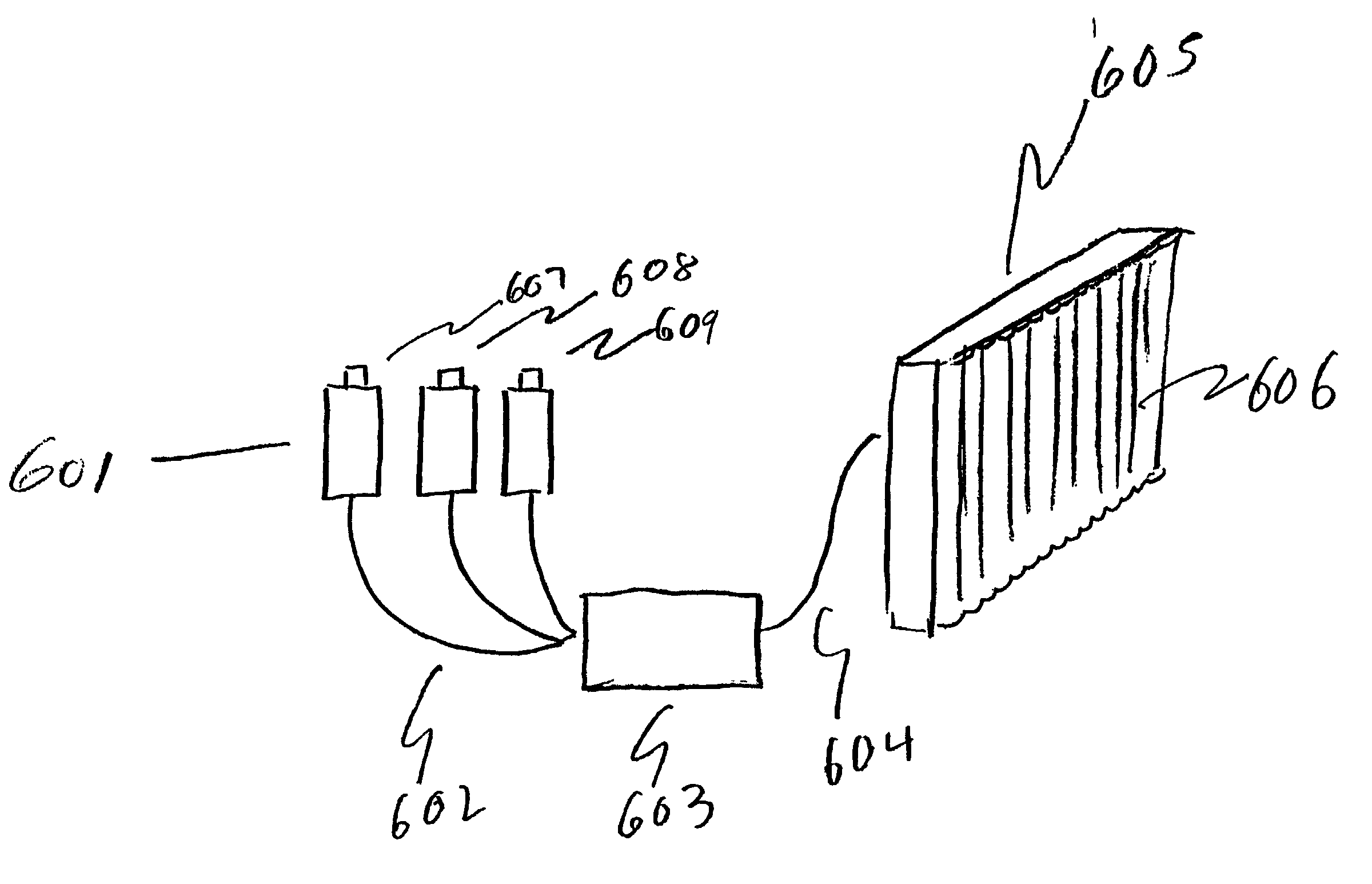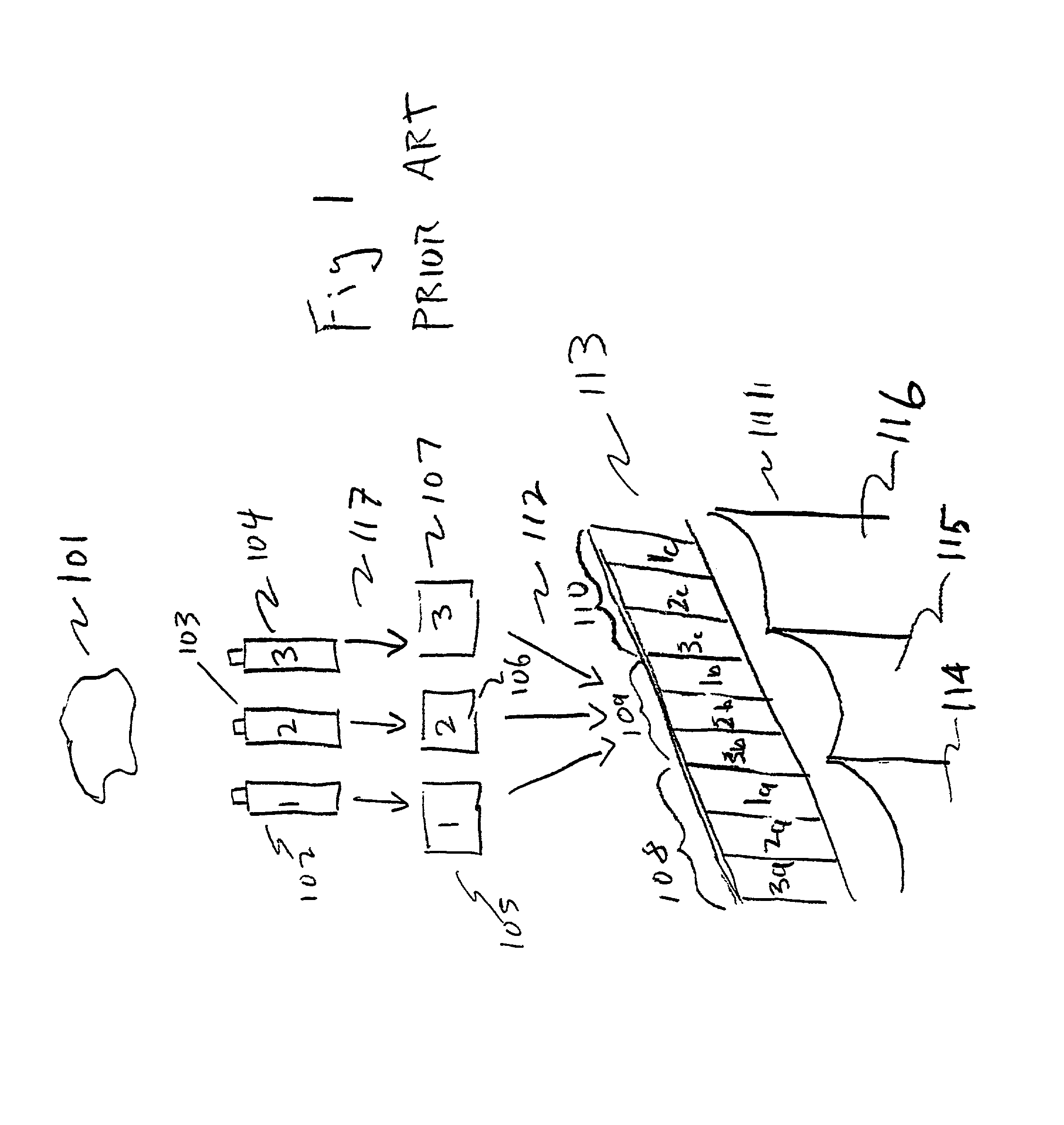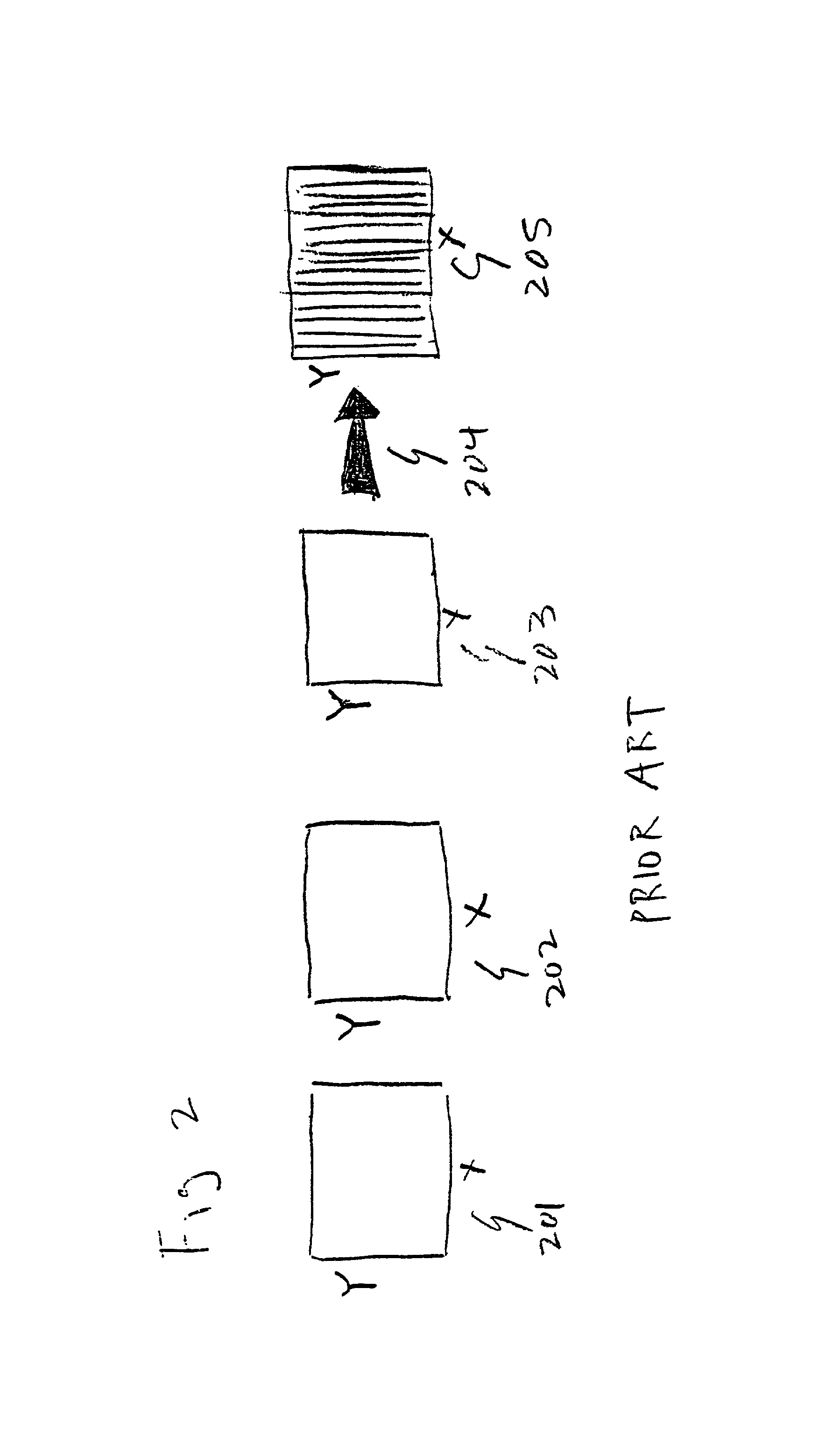Autostereoscopic pixel arrangement techniques
a pixel arrangement and autostereoscopic technology, applied in optics, instruments, electrical equipment, etc., can solve the problems of increased brightness, difficult fabrication, low brightness, etc., and achieve the effect of minimizing the resolution of the master imag
- Summary
- Abstract
- Description
- Claims
- Application Information
AI Technical Summary
Benefits of technology
Problems solved by technology
Method used
Image
Examples
Embodiment Construction
[0043]In the course of developing the present invention, we have applied the inventive techniques to both hardcopy prints and flat panel displays. In the case of prints, an Alps dye sublimation and Epson inkjet printers were used in conjunction with lenticular screens available off-the-shelf which were laminated to the surface of the print. As is typical, the lenticules were oriented parallel to the edge of the print, as in a traditional Ives' panoramagram. In the case of the flat panel display, we used a Silicon Graphics flat panel LC monitor with a 17-inch diagonal screen, and the technique disclosed by Winnek was used to increase horizontal resolution and reduce the moire patterns.
[0044]Our compression / decompression and pixel mapping schemes were used for both prints and flat panels. While we reduce the resolution of the master images, we do not reduce the pictorial image quality of the final autostereoscopic image. It is important to be able to reduce the resolution of the maste...
PUM
 Login to View More
Login to View More Abstract
Description
Claims
Application Information
 Login to View More
Login to View More - R&D
- Intellectual Property
- Life Sciences
- Materials
- Tech Scout
- Unparalleled Data Quality
- Higher Quality Content
- 60% Fewer Hallucinations
Browse by: Latest US Patents, China's latest patents, Technical Efficacy Thesaurus, Application Domain, Technology Topic, Popular Technical Reports.
© 2025 PatSnap. All rights reserved.Legal|Privacy policy|Modern Slavery Act Transparency Statement|Sitemap|About US| Contact US: help@patsnap.com



